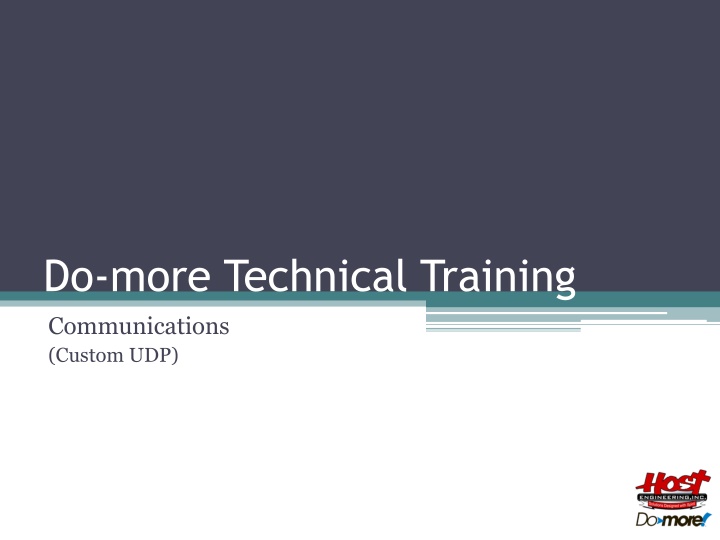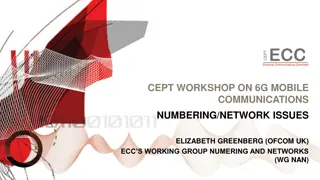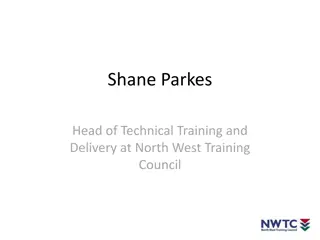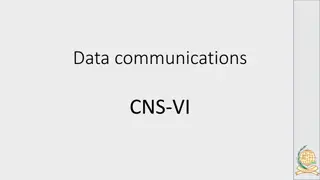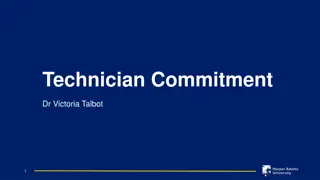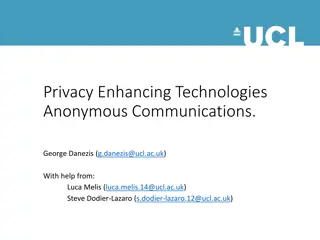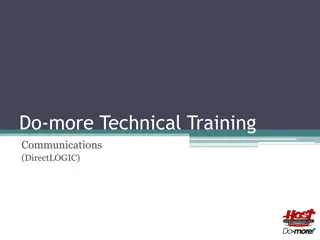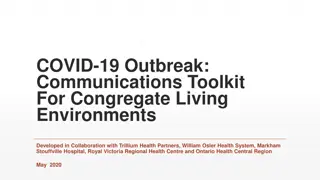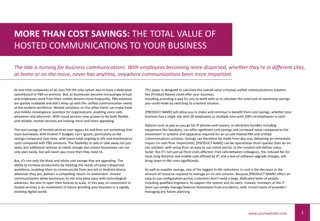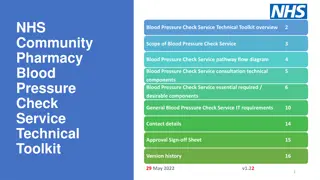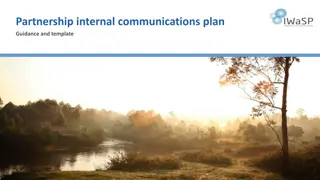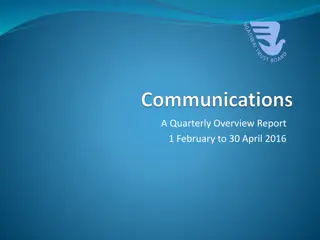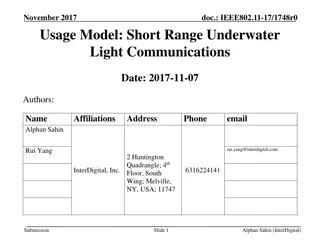Do-more Technical Training Communications
"Discover the custom UDP communication capabilities of Do-more with built-in Ethernet features. Learn about protocols, data streams, and setting up UDP connections for efficient data transfer. Explore TCP and UDP protocols along with implementation details for seamless communication. Enhance your technical skills in networking and data transmission with Do-more training."
Uploaded on Mar 02, 2025 | 0 Views
Download Presentation

Please find below an Image/Link to download the presentation.
The content on the website is provided AS IS for your information and personal use only. It may not be sold, licensed, or shared on other websites without obtaining consent from the author.If you encounter any issues during the download, it is possible that the publisher has removed the file from their server.
You are allowed to download the files provided on this website for personal or commercial use, subject to the condition that they are used lawfully. All files are the property of their respective owners.
The content on the website is provided AS IS for your information and personal use only. It may not be sold, licensed, or shared on other websites without obtaining consent from the author.
E N D
Presentation Transcript
Do-more Technical Training Communications (Custom UDP)
Communications Custom UDP Do-more built-in Ethernet
Communications Custom UDP Serial & TCP Protocols are streams of data Serial medium is usually a private conversation OK. I will talk at How will I know when I m only going to Stream of weather Bye Thanks. I need to give you the latest data on the weather. other things to do. to you. complete? points. OK, but don t talk too slow; I ve got this rate and only the conversation is I ll say bye . give you 5 data OK, I m listening data ENGINEERING: What type of data will be sent? transmitted? end? ENGINEERING: IMPLIMENTATION: IMPLIMENTATION: IMPLIMENTATION: ENGINEERING: How is the data How will the data Partner listens. Transfer complete (Processes data)
Communications Custom UDP TCP Protocol medium is a network TCP is connection-based protocol Dial Ring I m sorry, but I m pretty busy at the moment. Can we talk? OK. I ll call you later. Dial Hello? A connection must be established before a conversation can take place. The client (man) must call the server (woman). One is initiating and the other is listening. Ring Can we talk? <starts conversation> Hello? Sure. What s up? The conversation is delimited because both parties will agree on when it is over and say, Bye , just like serial comms.
Communications Custom UDP UDP Protocol medium is also a network UDP is connectionless protocol Since no connection is needed, no resources (i.e. cellphone) are monopolized A connection is not necessary. The client (man) simply sends a message to the server (woman).
Communications Custom UDP UDP Connection (Initiator or Listener) Do-more CPU with built-in Ethernet port Must create a UDP Connection Use Device Configuration & <New Device> button UDP Connection , press <OK> button Give it a Device Name Give it a UDP Port number this Device will only receive packets that are sent to this port number Use PACKETOUT / PACKETIN instructions to send/receive data to/from partner
Communications Custom UDP Custom Protocol Data Size Client Instruction Server Instruction Type Server Member Serial Stream Unlimited STREAMOUT STREAMIN InQueue (# of bytes) STREAMIN STREAMOUT TCP OPENTCP TCPLISTEN STREAMOUT STREAMIN STREAMIN STREAMOUT PacketAvailable (bit) UDP Packet 1 packet PACKETOUT PACKETIN
Communications Custom UDP @MyUDP (Initiator) @MyUDP (Listener) Output Buffer Input Buffer TIME <CR><LF> TIME <CR><LF> TIME <CR><LF> The logic for the PACKETIN can be set to monitor the PacketAvailable bit & when it is executed, will read the data out of the Input Buffer PacketAvailable = ON PacketAvailable = OFF When the @MyUDP Device gets around to it , it sends the data in its Output Buffer out on the wire stay until a PACKETIN is executed to get the data out ON indicate one or more packets The data goes into the @MyUDP Device s Input Buffer where it will @MyUDP Device s structure member, PacketAvailable, is set PACKETOUT does not send data out on the wire; it merely writes the data to the @MyUDP Device s Output Buffer are currently in the Input Buffer PACKETOUT TIME <CR><LF> PACKETIN TIME <CR><LF> Memory
Communications Custom UDP PACKETOUT Output Data to Packet Device Writes data to UDP Device s output buffer Fully asynchronous instruction (red triangle) Parameters: Device UDP Connection Device To IP Address: Variable Address From UDP Read uses IP address read from the last PACKETIN instruction execution Fixed Address To UDP Port Number Data Source: String Structure string to send Numeric Data Block Buffer Start location of start of data buffer to send Number of Bytes to Output On Success: Set bit, JMP to Stage On Error: Set bit, JMP to Stage
Communications Custom UDP PACKETIN Input Data from Packet Device Retrieves data from UDP Device s input buffer Structure member PacketAvailable comes ON when there is one or more packets in the input buffer to receive Fully asynchronous instruction (red triangle) Parameters: Device UDP Connection Device Came from IP Address where to put the sender s IP address from which the packet came from Came from UDP Port Number where to put the packet s sending port number value Network Timeout Max Number of Bytes to read from Packet Data Destination: String Structure Numeric Data Block: Start Address Number of Bytes Read On Success: Set bit, JMP to Stage On Error: Set bit, JMP to Stage because without it the PACKETIN has potential to lock the UDP Device The Came from IP Address & Came from UDP Port Number parameters are NOT something you provide, but instead are When attempting to get a PACKETIN to work the first time, the importance of Network Timeout cannot be overstressed something the PACKETIN instruction provides you
Communications Custom UDP UDP Connection (Listener) UDP Connection (Initiator) Do-more CPU Do-more CPU Memory Memory UDP @MyUDP @MyUDP PACKETOUT PACKETIN
Communications Custom UDP Communications Test IP Address: 10.1.1.200 UDP Port #: 1234 Commands delimited by <CR><LF>: TIME Response: Current PLC Time is: 04:02:14 PM DATE Response: Current PLC Date is: 3/11/2016 SCANTIME Response: Current PLC Scan Time is: 561us FIRMWARE Response: Current PLC Firmware is: 176201 IPADDRESS Response: Current PLC IP Address is: 10.1.1.200
